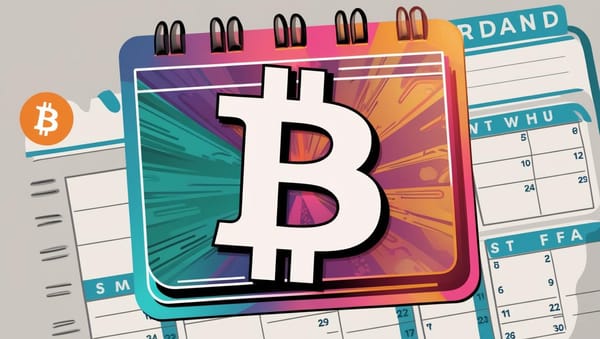The Bull and Bear of Bitcoin: Smart Investment or High-Risk Gamble?

Since its inception in 2009, Bitcoin has been a hot topic of discussion. From being worth just a few cents per coin to soaring to tens of thousands of dollars, this digital currency has created millionaires while also sparking controversy. However, beneath its glittering facade, a fundamental question persists: is Bitcoin a smart investment or merely a high-risk gamble? Let’s explore the ups and downs of Bitcoin, incorporating the latest data as of March 2025, technical analysis, and regulatory developments to answer this question.
The Beginning and Phenomenal Surge
Bitcoin was created by the mysterious figure known as Satoshi Nakamoto as a decentralized currency free from bank or government control. Initially, Bitcoin was more of a technological experiment than an investment tool. However, everything changed when its value started to skyrocket. In December 2017, Bitcoin peaked near $20,000, enticing many to jump in. Then, in November 2021, its price surged again to nearly $69,000.
As of March 14, 2025, Bitcoin is trading around $95,000 (approximately IDR 1.55 billion at an exchange rate of IDR 16,300 per USD), after reaching a high of $108,000 in December 2024—a 150% increase over the past year, according to CNBC reports.
However, Bitcoin’s story isn’t always sweet. After each peak, its price has often plunged drastically. For example, after its 2021 record high, Bitcoin fell below $20,000 in 2022 due to poor market sentiment, stringent regulations, and a global economic crisis. In early 2025, volatility struck again: Bitcoin dropped 11% in the last week of February, hitting $82,000 before rebounding to its current level. This extreme volatility is one reason why many view Bitcoin as more of a gamble than a stable investment.
Why Is Bitcoin So Volatile?
Several factors cause Bitcoin’s price to rise and fall like a roller coaster:
- Limited Supply: Bitcoin has a maximum cap of 21 million coins. As of March 2025, approximately 19.8 million coins have been mined, leaving little room for new supply, pushing prices higher when demand surges.
- Market Sentiment: Major news impacts prices instantly. For instance, the jump to $100,000 in December 2024 followed Donald Trump’s victory in the U.S. presidential election, which was seen as pro-crypto. However, the announcement of new U.S. import tariffs in February 2025 triggered a sharp decline.
- Speculation: Many investors buy Bitcoin with the intent to sell at a higher price. Data from CoinMarketCap shows Bitcoin’s daily trading volume reached $57 billion on March 13, 2025, indicating high speculative activity.
- Regulations: Legal uncertainty remains a key volatility driver. In 2025, Trump’s anticipated crypto-friendly policies have yet to fully materialize, creating investor skepticism.
Technical Analysis: Mapping Bitcoin’s Price Movements
To understand Bitcoin’s future direction, technical analysis provides valuable insights. Based on data as of March 16, 2025:
- Moving Average (MA): The 50-day moving average (MA50) stands at $92,000, while the 200-day moving average (MA200) is at $85,000. The current price ($95,000) above both MAs suggests a short-term bullish trend, but the thin gap with MA50 indicates a potential correction if support fails.
- Relative Strength Index (RSI): The daily RSI is at 51, indicating neutral momentum. This means Bitcoin is neither overbought (above 70) nor oversold (below 30), but a bearish trend could emerge if RSI dips below 50 due to selling pressure.
- Support and Resistance: The key support level is at $87,000 (near MA200), while resistance sits at $100,000. A breakout above $100,000 could push Bitcoin back to $108,000, but failure to hold $87,000 could send it back down to $82,000.
- Chart Patterns: Bitcoin recently broke out of a bearish "descending channel" pattern in early March 2025, signaling potential trend reversal. However, the lack of significant trading volume suggests weak confirmation for a major rally.
This analysis shows Bitcoin is at a crossroads: bullish if positive catalysts emerge, or bearish if global economic pressures intensify.
Regulations: A Boon or a Burden?
Regulations play a significant role in Bitcoin’s market dynamics. In 2025, the U.S., under Donald Trump, has begun adopting a more crypto-friendly stance. The appointment of pro-crypto advocate Paul Atkins as SEC chairman in February 2025, replacing the anti-crypto Gary Gensler, has fueled optimism. According to a February 2025 report from Pintu Academy, potential U.S. crypto-friendly regulations, including plans for altcoin ETFs, could boost institutional adoption. The spot Bitcoin ETF approved in 2024 has already amassed $129 billion in assets, according to Galaxy Research, reinforcing Bitcoin’s status as a mainstream asset.
However, challenges remain. The U.S. import tariffs announced in February 2025 have sparked economic uncertainty, affecting investor sentiment. In Indonesia, Bitcoin is regulated by Bappebti under Regulation No. 5 of 2019, requiring assets to rank among the top 500 globally for trading eligibility. As of March 2025, Bitcoin still meets this criterion, but its high volatility keeps regulators on alert, potentially leading to stricter rules if risks escalate.
Smart Investment: The Bullish Case
For its supporters, Bitcoin is "digital gold" and a smart investment opportunity. Here’s why:
- Decentralization: Bitcoin is not dependent on traditional financial institutions. Its market capitalization reached $1.8 trillion (around IDR 29,340 trillion) as of March 2025, reflecting strong global trust.
- Growing Adoption: Companies like Tesla and nations like El Salvador continue to support Bitcoin. A March 2025 report from River states that 4% of the world’s population now owns Bitcoin, with the U.S. leading at 14%.
- Long-Term Potential: Optimistic projections from Standard Chartered (January 2025) estimate Bitcoin could reach $150,000–$200,000 by the end of the year, driven by institutional inflows through Bitcoin ETFs.
Successful investors like Michael Saylor of MicroStrategy prove this strategy works. His company remains profitable despite volatility, with a "HODL" strategy that benefits those with patience.
High-Risk Gamble: The Bearish Case
On the other hand, critics like Warren Buffett call Bitcoin "rat poison squared" due to its lack of intrinsic value. Supporting data includes:
- Extreme Volatility: Within a week (March 7–14, 2025), Bitcoin’s price jumped from $87,000 to $95,000 (about 9%) after previously dropping 11%. RSI at 51 indicates a neutral market, but a bearish trend could re-emerge.
- No Guarantees: Unlike traditional assets, Bitcoin is not backed by any entity. Crypto wallet hacks remain frequent, with global losses reaching $1.2 billion in 2024 (Chainalysis report).
- Market Manipulation: "Whale" activity was detected in February 2025, with the number of addresses holding 1,000+ BTC dropping from 2,054 to 2,042, signaling potential large sell-offs driving price declines.
So, What Should You Do?
Whether Bitcoin is a smart investment or a high-risk gamble depends on your risk tolerance. As of March 14, 2025, Bitcoin’s market capitalization remains strong at IDR 29,340 trillion, though it has dropped from its December 2024 peak of IDR 32,000 trillion due to volatility. Analysts’ predictions vary: Matrixport forecasts $160,000 by late 2025, while Bit Mining projects $180,000–$190,000, with potential corrections due to global economic tensions.
Technical analysis suggests Bitcoin could go bullish if it breaks $100,000, supported by U.S. pro-crypto regulations. However, failure to hold $87,000 or unclear regulations could trigger declines. If you thrive on risk and believe in blockchain, Bitcoin could be part of your portfolio—but never invest more than you can afford to lose. If stability is your priority, this asset may be too wild. Diversification remains key: allocate some to Bitcoin and the rest to bonds or gold. In this dynamic 2025 landscape, the choice is yours: golden opportunity or a roll of the dice?
This article presented by Loka Mining.
Loka is revolutionizing the Bitcoin mining ecosystem by directly connecting investors with Bitcoin miners through a decentralized mining pool and an upcoming permissionless forward hashrate marketplace protocol.
Loka enables investors to get Bitcoin at lower than market price without centralized & counter-party risks, and Bitcoin miners to access capital efficient financing and hedge their risk exposure by selling their future mining rewards.
Find out more about loka in https://lokamining.com — or access our mining pool aggregator on https://pool.lokamining.com





